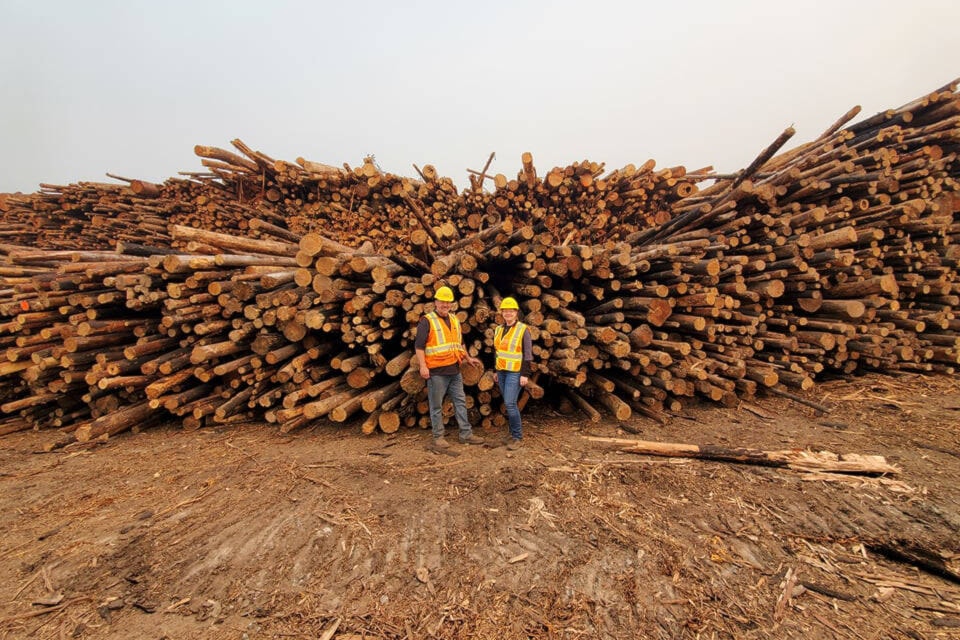The Clinton Community Forest is finding new uses for the charred woody fibre left from the 2017 Elephant Hill wildfire.
Thanks to funding from the Forest Enhancement Society of BC (FESBC), the community forest has been able to salvage usable and viable timber for biofuel, said Community Forest general manager Steve Law. About $512,000 in funding was provided to recover and use 32,000 cubic metres of low-quality residual fibre: 580 truckloads.
The project is being done in partnership with Ledcor Group and Arrow Transportation Systems Inc., which grinds up the logging debris into hogfuel chips and ships it to Kamloops to make electricity and thermal power. Biomass logs are also sorted at River City Fibre to make pulp products and biofuel.
The Clinton community forest does not make any money from the project. However, Law noted that using wood rather than burning it in piles means fewer greenhouse gases are going into the atmosphere.
“Usable and viable timber can still be salvaged after wildfire — but only for so long afterwards,” Law said. “Normally, we’d selectively log Douglas Fir and have about 50 per cent remaining. After a large fire, most of the work involves replanting without offsetting the cost through selling the logs. Without funding from FESBC, this work would not have been economical, and the fibre likely would have been burned. The financial support allowed us to recover the fibre instead.”
The project also included funding of $128,000 to create a 100-metre-wide fuel break southeast of the Village of Clinton to help reduce the future wildfire risk to the community. The fuel break is a zone where trees are spaced farther apart, and the amount of flammable wood is reduced.
“What started as a wildfire risk reduction project turned into an opportunity to also recover fibre,” said Ray Raatz, operations manager for FESBC. “This project showed not only what we can do to mitigate the risk of wildfire but also what can be done to recover and salvage fibre after a fire.”
Jennifer Gunter, Executive Director of the BC Community Forest Association, said community forests play an important role in good forest stewardship.
“This story of the Clinton Community Forest is a great example of how community forests can explore forest management practices and try something new, which has resulted in a long-term investment in the land base,” she said in a news release. “Community forests are important, regionally and provincially, to provide a base for ingenuity and innovation.”
editorial@accjournal.ca
Like us on Facebook and follow us on Twitter
